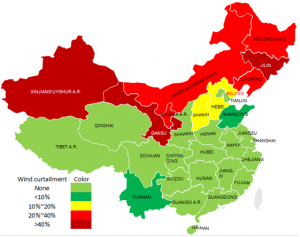The National Energy Administration’s announcement of increased investment into renewables comes at a time where the US politically backs away from clean energy sources. China clearly aims to further establish itself as global renewable energy technology leader.

The challenge is immense. Currently 64 percent of China’s primary energy consumption is provided by coal. The ambitious target for 2020 is to reduce this share to less than 58 percent, while non-fossil fuels are to increase to more than 15 percent of primary energy consumption. All of this is to be achieved partly by the new targets for capacity additions in the conventional and renewable sector laid down in the 13th Five-Year-Plan for energy. Figure 1 depicts the expansion of renewable capacity until 2021 in China and the rest of the world. This clearly shows how China will dominate in the expansion of renewable energies in the years to come.

Figure 1: Share of expansion of renewable capacities until 2021 in China and the rest of the world (in percent) (Source: Financial Times)
To facilitate the build-up of renewable capacity, the National Energy Administration wants to pour 2.5 trillion RMB (340 billion EUR) into renewable power generation by 2020. This would represent 68 billion EUR per year, roughly a quarter of global investments into renewables in 2015, which amounted to 270 billion EUR.
This further boost in renewables is also expected to create 3 million additional jobs, and bringing the total number of employees in China renewable energy technology sector to 13 million by 2020. A rough estimation of where those 2.5 trillion RMB are to be spent at, are provided by the National Development and Reform Commission’s (NDRC) own Five-Year-Plan: About 1 trillion RMB (140 billion EUR) goes into solar energy boosting current capacities about five-fold and making use of falling costs of large-scale solar power plants, 0.7 trillion RMB (100 billion EUR) are to be directed into wind energy developments, 0.5 trillion RMB (70 billion EUR) into hydro power, while the rest is to be distributed on developments of tidal and geothermal energy (Source: Reuters).



